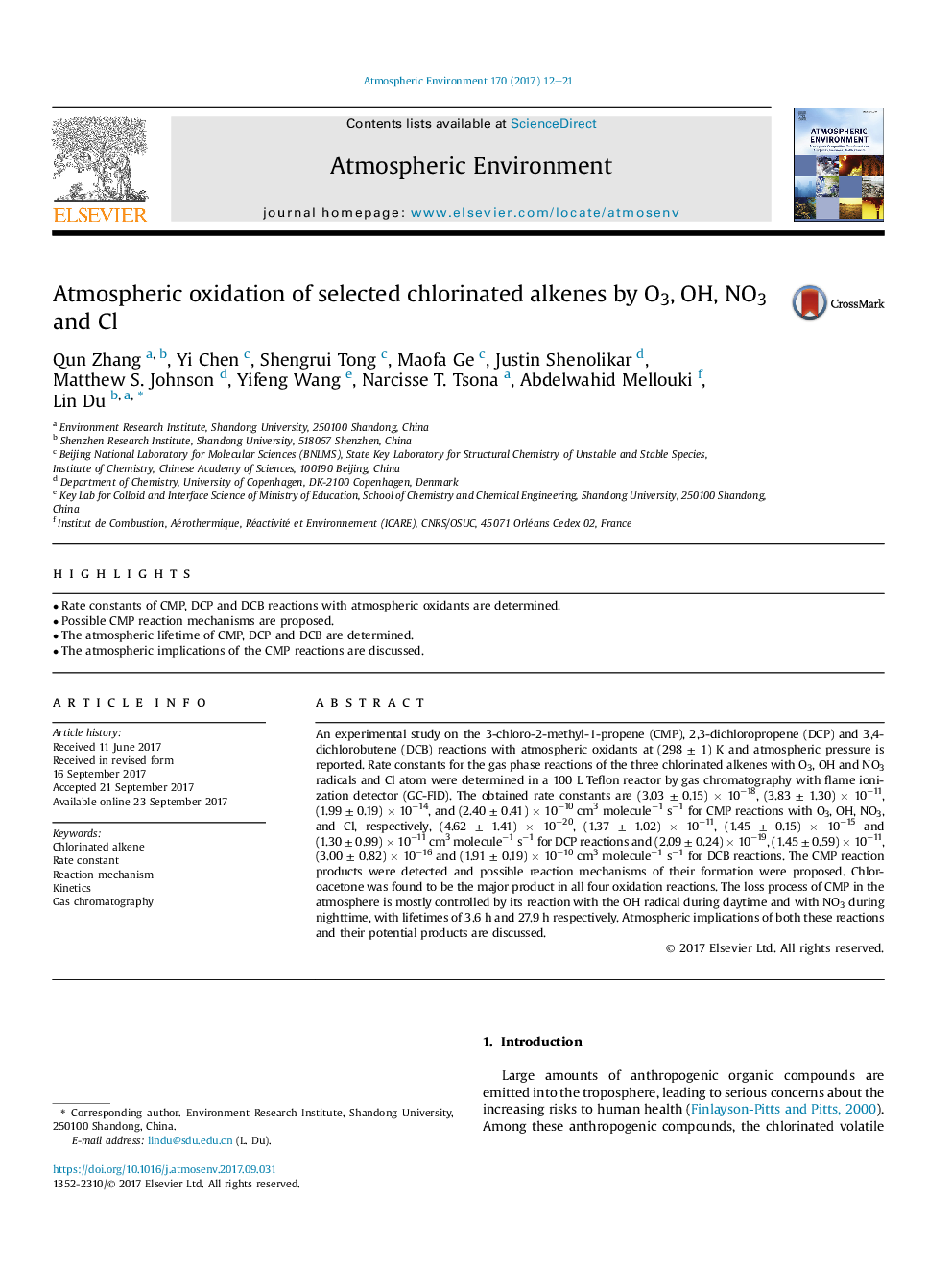| Article ID | Journal | Published Year | Pages | File Type |
|---|---|---|---|---|
| 5752939 | Atmospheric Environment | 2017 | 10 Pages |
Abstract
An experimental study on the 3-chloro-2-methyl-1-propene (CMP), 2,3-dichloropropene (DCP) and 3,4-dichlorobutene (DCB) reactions with atmospheric oxidants at (298 ± 1) K and atmospheric pressure is reported. Rate constants for the gas phase reactions of the three chlorinated alkenes with O3, OH and NO3 radicals and Cl atom were determined in a 100 L Teflon reactor by gas chromatography with flame ionization detector (GC-FID). The obtained rate constants are (3.03 ± 0.15) Ã 10â18, (3.83 ± 1.30) Ã 10â11, (1.99 ± 0.19) Ã 10â14, and (2.40 ± 0.41) Ã 10â10 cm3 moleculeâ1 sâ1 for CMP reactions with O3, OH, NO3, and Cl, respectively, (4.62 ± 1.41) Ã 10â20, (1.37 ± 1.02) Ã 10â11, (1.45 ± 0.15) Ã 10â15 and (1.30 ± 0.99) Ã 10â11 cm3 moleculeâ1 sâ1 for DCP reactions and (2.09 ± 0.24) Ã 10â19, (1.45 ± 0.59) Ã 10â11, (3.00 ± 0.82) Ã 10â16 and (1.91 ± 0.19) Ã 10â10 cm3 moleculeâ1 sâ1 for DCB reactions. The CMP reaction products were detected and possible reaction mechanisms of their formation were proposed. Chloroacetone was found to be the major product in all four oxidation reactions. The loss process of CMP in the atmosphere is mostly controlled by its reaction with the OH radical during daytime and with NO3 during nighttime, with lifetimes of 3.6 h and 27.9 h respectively. Atmospheric implications of both these reactions and their potential products are discussed.
Related Topics
Physical Sciences and Engineering
Earth and Planetary Sciences
Atmospheric Science
Authors
Qun Zhang, Yi Chen, Shengrui Tong, Maofa Ge, Justin Shenolikar, Matthew S. Johnson, Yifeng Wang, Narcisse T. Tsona, Abdelwahid Mellouki, Lin Du,
